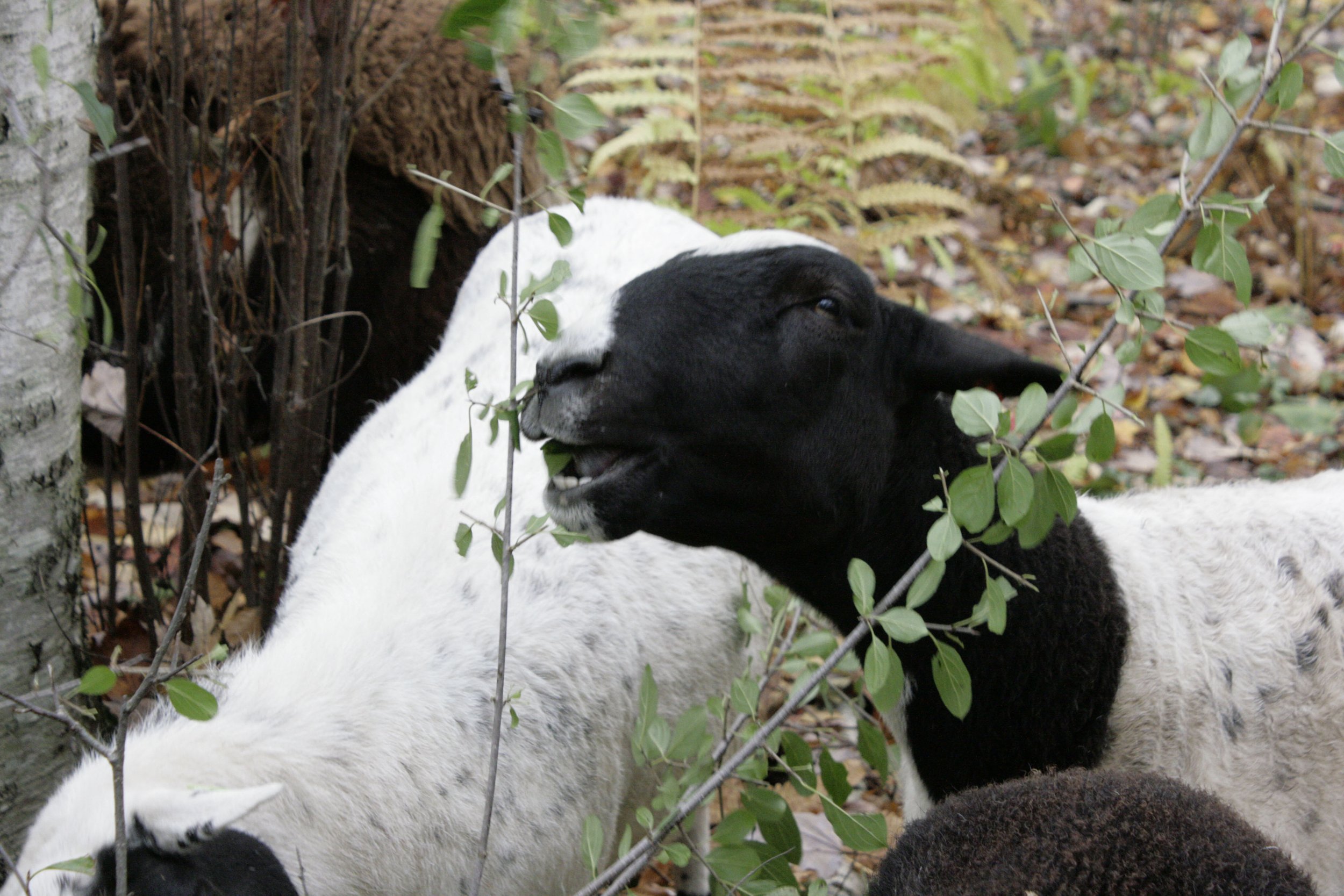Adapted from the Woodlands of Minnesota Landowner Handbooks
Invasive plants can cause big problems for woodlands when they displace native species. For example, shrubs such as buckthorn, garlic mustard, and honeysuckle can crowd the understory of your woods or proliferate along your trails, degrading wildlife habitat and making recreational access difficult.
Garlic mustard taking over understory.
Prevention is Best
Prevention is the first and least costly step to combat any plant, insect, or fungi you don’t want. Here are some steps you can take.
Buckthorn berries.
Avoid spreading seeds, insects, and microbes found in wood or soil to new areas by cleaning boots, tires, pets, and equipment after being in the woods.
Minimize disturbance to native vegetation where possible and maintain healthy communities of native species.
Monitor high-risk areas such as roads, trails, and disturbed ground for new invasive species.
Detect new outbreaks of invasive species early and eradicate them quickly.
If They’ve Already Arrived
If you have confirmed that invasive plants are growing in your woods, take steps to control them. Catching an infestation early can be critical to successful eradication. Eradicating established invasive plants is more difficult and expensive, but you can still manage the problem and give your native plants a chance to compete.
A variety of methods are used to control invasive plants.
Hand-pulling: Pull by hand small seedlings in the spring when the soil is moist, taking care to remove the entire root so the plant does not resprout.
Herbicide: Control infestations with spot herbicide treatments. Take care to treat only the invasive plant and protect native plants. Before applying any herbicides, ask your forester to recommend the most effective treatment and product for your site. Finally, follow instructions on the product label—it’s the law and wear protective clothing.
Spray the leaves of young invasive sprouts and seedlings, preferably in the fall after native plants have lost their leaves and gone dormant. This reduces the chances of killing the plants you want to keep.
Cut the base of large woody plants and immediately treat the stump with the appropriate herbicide to prevent resprouting.
Apply specific oil-based herbicides to standing trees as a “basal bark treatment.” Spray or daub the herbicide on the bark around the lower portion of the plant’s stem. The herbicide penetrates through the bark and kills the standing tree.
Fire: Prescribed burning can kill small seedlings and sprouts. Always consult with a professional to determine if burning is appropriate for controlling the invasive species in your woods, and how frequently you need to burn. You will also need a burning permit. Info about burning permits at mndnr.gov/forestry/fire
Mowing or grazing: Some invasive plants can be deterred by repeatedly mowing the plants before they go to seed. Alternatively, livestock such as cows, sheep, or goats can be used to graze heavily infested areas of certain invasive species. Talk to your forester if grazing might be an option.
Insects: In a few cases, scientists have identified insects that selectively attack specific invasive plants, sparing native species. For example, two types of weevil are used to control spotted knapweed, an aggressive invader of open or disturbed areas. One weevil attacks the seedhead. Another weevil attacks the roots of the knapweed, weakening or killing those plants. Both weevils are needed to control knapweed. Purple loosestrife and leafy spurge are two other species that have biological control insects in Minnesota. For information on applying biological controls on your property, contact your county agricultural inspector or the Minnesota Department of Agriculture.
Pro Tips
If you’re dealing with an infestation, first remove the outlier invasive plants to prevent new infestations, especially the seed-producing plants. Then tackle the heavily infested areas.
Cutting, stacking, and burning woody plants on site prevents dragging berries and seeds to other areas.
Seeds in the soil can germinate for several years after you remove mature plants. Be persistent in removing new plants until the seedbed is exhausted or the infestation will return.
Plant native species to fill the void and prevent new invaders from quickly returning to the disturbed area. Native shrubs that could replace buckthorn and honeysuckle include elderberry, highbush cranberry, Juneberry, nannyberry, American hazelnut, and wild plum.
Always watch for new invasive species that can pop up where they have not been spotted before. Projects that increase the diversity of plant species and ages will strengthen your woods’ resiliency to change. Always clean your equipment to reduce the chance of introducing unwanted pests to your land.
Visit the DNR’s Terrestrial Invasive Species website to stay current on how to identify and manage invasive plants: mndnr.gov/invasives/terrestrial/index.html



